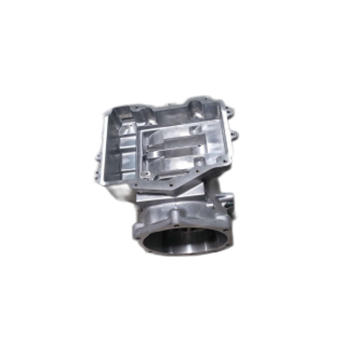The die-casting process is a process of organically combining and using the three die-casting production elements of die-casting alloy, die-casting mold and die-casting machine. There are many factors that affect the filling and forming of molten metal during the pressure prayer, among which the injection force, injection speed, filling time and die temperature are the main ones.


It is mainly divided into the following four processes:
1. Selection of pressure and speed.
The selection of injection specific pressure should be determined according to the structural characteristics of different alloys and castings. For the selection of filling speed, generally for castings with thick walls or high internal quality requirements, lower filling speed and high boost pressure should be selected; for castings with thin walls or high surface quality requirements and complex castings, should be selected High specific calendar and high filling speed.
2. Pouring temperature.
The pouring temperature refers to the average temperature of the liquid metal when it enters the cavity from the pressing set. Since it is inconvenient to measure the temperature of the liquid metal in the pressing chamber, it is generally expressed by the temperature in the holding furnace. If the pouring temperature is too high, the shrinkage will be large, which will make the casting prone to cracks, large grains, and stickiness. Therefore, the pouring temperature should be considered at the same time as the pressure, the temperature of the die casting mold and the filling speed.
3. The temperature of the die-casting mold.
The die-casting type should be preheated to a certain temperature before use, generally using gas, blowtorch, electrical or induction heating. In continuous production, the temperature of die casting molds tends to increase, especially for die casting high melting point alloys, which increases rapidly. In addition to making the liquid metal sticky when the temperature is too high, the cooling of the casting is slow and the grains are coarse. Therefore, when the temperature of the die-casting mold is too high, cooling measures should be taken. Cooling is usually performed with compressed air, water or chemical media.
4. Filling, holding pressure and opening time
(1) Filling time. The time required from the liquid metal entering the cavity to the filling of the cavity is called the filling time. The length of filling time depends on the size and complexity of the casting volume. For large and simple castings, the filling time is relatively long, and for complex and thin-walled castings, the filling time is shorter. The filling time is closely related to the cross-sectional area of the gate or the width and thickness of the gate, and must be determined correctly.
(2) Holding pressure and opening time. The duration from the liquid metal filling the cavity to the complete solidification of the inner gate is called the holding time. The length of the holding time depends on the material and wall thickness of the casting. After holding the pressure, the casting should be opened and taken out. The time from the end of the injection to the opening of the die-casting is called the opening time, and the opening time should be controlled accurately. If the opening time is too short, due to the low strength of the alloy, it may cause deformation when the casting is ejected and the die is dropped; but if the opening time is too long, the temperature of the casting will be too low and the shrinkage will be large. The resistance is also great. Generally, the opening time is calculated according to the casting wall thickness of 1 mm and takes 3 seconds, and then adjusted by trial.
